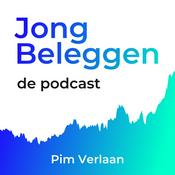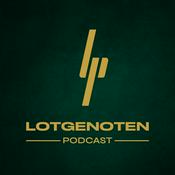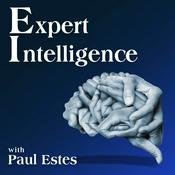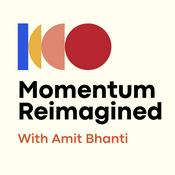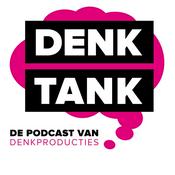644 afleveringen

AI Agent & Copilot Podcast: Microsoft's Grant Dess Provides AI Agent & Copilot Summit Insights
23-12-2025 | 16 Min.
Key TakeawaysReflections: Grant reflects on last year's AI Agent & Copilot Summit, acknowledging the in-depth learning opportunities given the newness of AI at the time. Although it was the first year, he says it "felt like a really mature conference." The upcoming AI Agent & Copilot Summit can enable attendees to dig deeper into "how we actually accomplish things as a business, as an organization, and even as individuals.Session considerations: Looking forward to the event in March, Grant is excited to attend various sessions. He finds sessions on Microsoft products interesting as well as sessions that provide an individual point of view. "I'll look at the content of a session, but I look almost equally as much at the speaker to think about, 'What is this person like? What's their perspective in the world and on business? And how are they using this in a way that other people aren't yet?' I think that's where we start hitting and tapping on innovation."Learning from insights: AI Agent & Copilot Summit speakers come to the event prepared to share their experiences and expertise with attendees. Grant outlines what topics attendees might expect and what sessions he submitted to speak at the event. "The world is changing by the minute, and I think it's important for us to go into this eyes wide open and think about what we're doing right and how we're doing it. It matters," he states. Visit Cloud Wars for more.

AI-Enhanced Security: ServiceNow’s Bold Move with Armis
23-12-2025 | 2 Min.
In today's Cloud Wars Minute, I explore what ServiceNow’s potential $7B acquisition of Armis could mean for its cybersecurity strategy and its customers.Highlights00:06 — According to recent reports, ServiceNow is in advanced talks to acquire Armis, with more details expected to be announced in the coming days. Coverage from Bloomberg suggests that the deal could be worth up to $7 billion. I want to discuss what the introduction of Armis to the ServiceNow ecosystem could mean for customers.00:34 — Armis is a cyber exposure management and security company. The company's technology protects the integrity of an organization's attack surface and manages cyber risk exposure in real time. The company's flagship platform, Armis Centrix, is an AI-enhanced, cloud-native security solution that monitors an organization's digital attack surface.01:07 — If this deal goes ahead at the reported price, it would be by far the largest acquisition in ServiceNow's history. The addition of AI-enhanced cybersecurity tools that not only consistently monitor but also provide real-time priority protection would significantly boost ServiceNow's existing security capabilities. Visit Cloud Wars for more.

AI Agent & Copilot Podcast: Insight Works' Mark Hamblin on How AI Transforms Process, Products
22-12-2025 | 23 Min.
Key TakeawaysAI use cases: At Insight Works, Hamblin explains that AI is leveraged in three main ways: to enhance internal business process development, to create higher-quality marketing content, and to enhance product offerings.Product specifics: Hamblin shares how AI is streamlining Shop Floor Insight, a product of Insight Works, by automating labor time validation, eliminating the need for supervisors to manually review time cards through exception-based logic and rules. Further, AI and agents are enhancing production scheduling by analyzing millions of decision points, identifying issues, and providing real-time insights or alerts, paving the way for innovative, user-driven automation through tools like the Agent Playground.Adoption: Hamblin notes the mixed reactions to AI adoption. While AI can rapidly deliver solutions, such as building a container management system in hours, it ultimately enables employees to focus on higher-value work, helping businesses scale without increasing headcount. However, AI-related change management can be complex, as capabilities evolve dramatically within months and future advancements are unpredictable. This uncertainty poses challenges for change management.AI advancement: Now, AI excels at processing large datasets and answering natural language queries, and its capabilities have advanced dramatically compared to a few years ago. Previously, it could build applications like a WMS mobile app in minutes, but today’s technology is far more powerful and sophisticated. Visit Cloud Wars for more.

Microsoft’s Frontier Firms: How Copilot at Scale Is Redefining the AI Operating Model
22-12-2025 | 2 Min.
Visit Cloud Wars for more.

Merry Christmas!! Happy Holidays!! May 2026 Be the Best Year Ever!!
19-12-2025 | 1 Min.
In today's Cloud Wars Minute, I want to wish everybody a Merry Christmas, Happy Holidays, and an incredible New Year.Highlights00:02 — This is the best time of the year, the holidays. We want to say Merry Christmas and Happy Holidays. Happy New Year to everybody. This is my special partner, Louisa. She's two and a half. She's quite the technologist.00:40 — So, hey, everybody, I just want to say it is a blast being a little part of your technology lives. We have enjoyed this year so much. We are having lots of fun with Cloud Wars. Louisa's got to go. She's got big things to do. Merry Christmas. Happy Holidays. Happy New Year to you. Visit Cloud Wars for more.
Meer Zaken en persoonlijke financiën podcasts
Trending Zaken en persoonlijke financiën -podcasts
Over Cloud Wars Live with Bob Evans
Luister naar Cloud Wars Live with Bob Evans, Jong Beleggen, de podcast en vele andere podcasts van over de hele wereld met de radio.net-app

Ontvang de gratis radio.net app
- Zenders en podcasts om te bookmarken
- Streamen via Wi-Fi of Bluetooth
- Ondersteunt Carplay & Android Auto
- Veel andere app-functies
Ontvang de gratis radio.net app
- Zenders en podcasts om te bookmarken
- Streamen via Wi-Fi of Bluetooth
- Ondersteunt Carplay & Android Auto
- Veel andere app-functies


Cloud Wars Live with Bob Evans
download de app,
luisteren.
